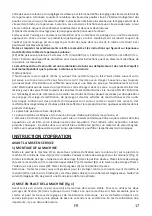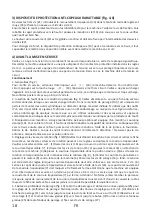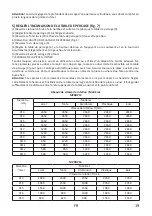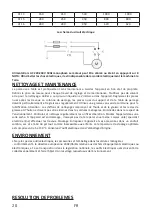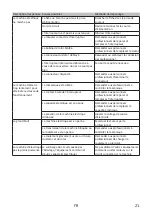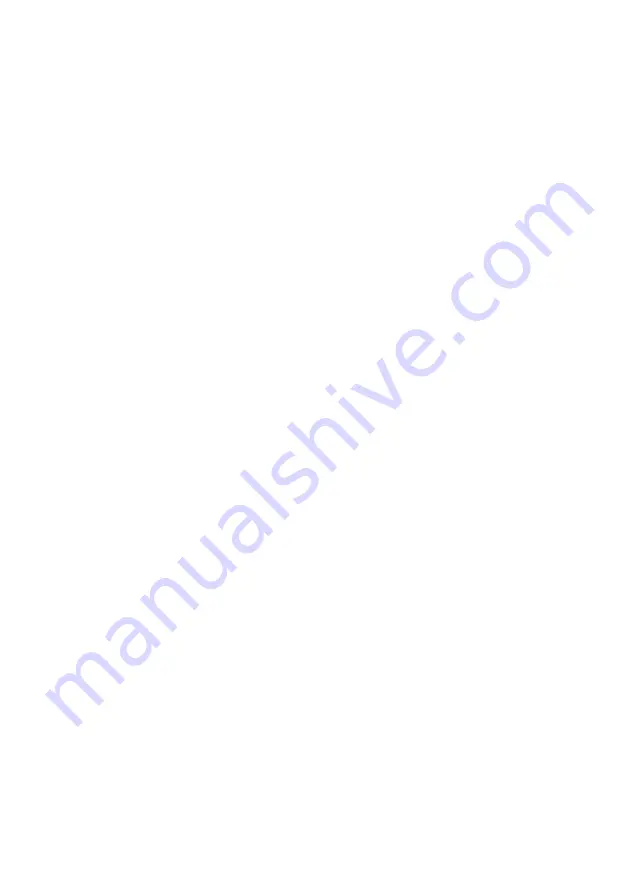
6
GB
auxiliary support.
(9) Use fi
xtures for unusual opera
tions
to adequat
ely hold, guide and position the
workpiece.
(10) Use the SPINDLE SPEED recommended for the
specific
opera
tion
and workpiece material — check the
panel inside the pulley cover for drilling informa
tion;
for accessories, refer to the ins
tructions
provided with
the accessories.
e. Never climb on the drill press t
able; it
could break or pull the en
ti
re drill press down on you.
f. Turn the motor switch “OFF” and unplug from power source when not in opera
tion.
g. To avoid injury from thrown work or tool contact, DO NOT perform layout, assembly, or setup work on
the table while the cu
tting
tool is rota
ting.
h. Clamp workpiece or brace against column to prevent rota
tion.
i. Before st
artin
g, be certain chuck key is removed from chuck and that motor head and table are locked. j.
Keep pulley cover closed when not making belt adjustments.
k. Do not expose to rain or use in damp loca
tions.
3) USE ONLY ACCESSORIES DESIGNED FOR THIS DRILL PRESS TO AVOID SERIOUS
INJURY FROM THROWN, BROKEN PARTS OR WORK PIECES.
(1)WHEN CUTTING LARGE DIAMETER HOLES: Clamp the workpiece
firmly
to the table. Otherwise the cu
tt
er
may grab and spin at high speed. Use only onepiece, cup-type, hole cu
tt
ers. DO NOT use
fly
cu
tt
ers or
multi-part hole cutt
ers as they come apart or become unbalanced in use.
(2)Drum sanders must NEVER be operated on this drill press at a speed greater than the speed ra
ting
of the
drum sander.
(3)Do not install or use any drill bit that exceeds 7" in length or extends 6" below the chuck jaws. They can
suddenly bend outward or break.
(4)Do not use wire wheels, router bits, shaper cu
tt
ers, circle (
fly
) cu
tt
ers, or rotary planers on this drill
press.
(5)Use recommended speed for drill accessory and workpiece material.
(6)Accessories must be rated for at least the spindle speed se
ttin
g of the drill press. This drill press has 5
spindle speeds. Check spindle speed se
tting
of the drill press based on pulley speed chart located inside the
pulley housing. Ensure accessories used has a higher speed ra
ting
than the current spindle speed se
tting
of
the drill press. Accessories running over its rated speed c
an fly apart and
cause injury.
4) DIRECTION OF FEED FOR DRUM SANDING
Feed workpiece into a sanding drum or other approved accessory, against the dir
ecti
on of rota
ti
on. A
kickback occurs when workpiece suddenly binds on the cu
tting
edge of the tool and the workpiece is
thrown by the cu
tt
er in the dir
ection of the cutt
er’s rota
tion. This
can cause serious injury.
5) THINK SAFETY
SAFETY IS A COMBINATION OF OPERATOR COMMON SENSE AND ALERTNESS AT ALL TIMES WHEN THE
DRILL PRESS IS BEING USED.
Do not allow familiarity (gained from frequent use of your drill press) to become commonplace. Always
remember that a careless frac
tion
of a second is su
ffi
cient to in
fli
ct severe injury. The opera
tion
of any
power tool can result in foreign objects being thrown into the eyes, which can result in severe eye damage.
Always wear safety goggles before commencing power tool opera
tion.
Some dust created by power
sanding, sawing, grinding, drilling, and other construc
tion
ac
tivities
contains chemicals known to cause
cancer, birth defects or other repr
oducti
ve harm. Some examples of these chemicals are:
(1)Lead from lead-based paints,
(2)Crystalline silica from bricks and cement and other masonry products, and
(3)Arsenic and chromium from chemically treated lumber. Your risk from these exposures varies, depending
on how o
ft
en you do this type of work. To reduce your exposure to these chemicals: work in a well
ven
til
ated area, and work with approved safety equipment, such as those dust masks that are specially
designed t
o fil
ter out microsc
opic particles.




















